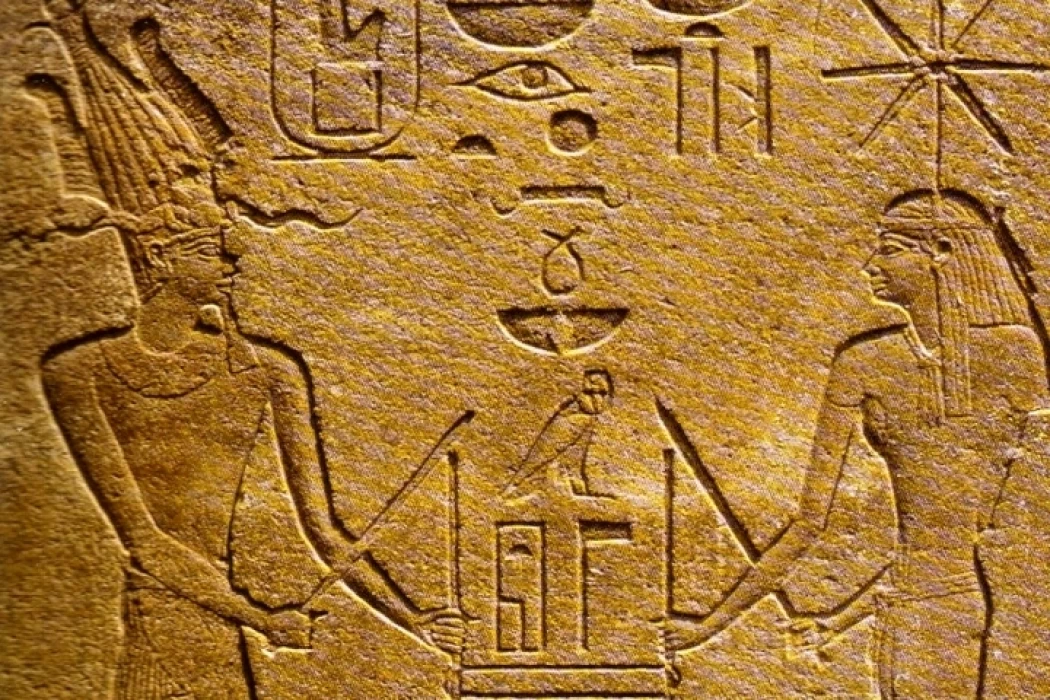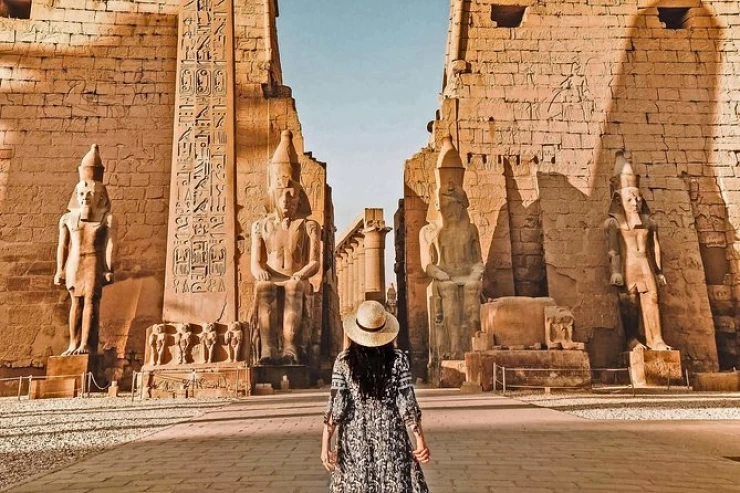
Diosa Seshat | Diosa de la escritura
Seshat, en la antigua fe egipcia, era la inmortal de la escritura y la actividad y, por tanto, la gobernante de los libros. Era la consorte del dios Djhuty (Thoth), y cada uno era un escriba divino (Sesb). Se la representaba como una mujer que llevaba un pañuelo con cuernos y una estrella con su nombre escrito en ella. Las representaciones de ella generalmente muestran su vestido como una vaina comprensible forrada por una piel de pantera extendida, con la cola llegando a sus pies. Es típica su delineación con la costilla de la palma de la mano con muescas que pintan el paso de su tiempo.
Se creía que Seshat era una asociada experta en el arte de observar las celebridades y los planetas. Se ha documentado que ayudaba a la oscilación dentro del ritual de "estirar el cordón" relacionado con las mediciones astronómicas y de pseudociencia para la situación de los templos. Seshat era la guardiana de los planos y las cartas de navegación dentro del ritual. Seshat también era representado registrando los jubileos del faraón, como dentro del desfile de Sed, el recuento de las vacas y, por lo tanto, las campañas del faraón desde el principio de la familia ordinal. Los relieves encontrados en los templos del Reino Antiguo (c. 2575-c. 2130 a.C.) y del Reino Medio (c. 1938-c. 1630 a.C.) la representan porque registraba las cantidades de cautivos extranjeros y el saqueo tras las campañas militares.
Seshat era conocida con el epíteto de "Señora de la Casa de los Libros" porque cuidaba la biblioteca de los dioses y era la patrona de todas las bibliotecas terrenales. También era patrona de todas las formas de escritura, incluyendo la contabilidad, la auditoría y la elaboración de los censos. Según un mito, fue Seshat quien inventó la escritura, pero fue su marido Thoth quien enseñó a la gente a escribir.
Es interesante observar que es el único personaje femenino que se representa en el acto de escribir. Otras mujeres se representaban sosteniendo la paleta y el pincel del escriba, lo que indica que podían escribir, pero no se dedicaban a ello.
Descubra más acerca de los dioses y diosas del antiguo Egipto a través de las excursiones de un día a Luxor también si puede subir al tren durante un par de horas al norte también puede cubrirlo durante las excursiones de un día a Asuán o incluso nuestra excursión de 2 días a Luxor desde Asuán hay una gran cantidad de excursiones de un día a Egipto que van a Luxor desde las diversas ciudades egipcias como las excursiones de un día a Hurgada por tierra a Luxor o si viene para unas vacaciones de ocio en Sharm puede tomar el avión por un día durante las excursiones a Sharm El Sheikh para explorar toda la ciudad histórica.
Reserve ahora para una gran experiencia de Vacaciones en Egipto y paquetes de vacaciones en Egipto Luxor tours de un día, Asuán tours de un día, y los tours de lujo de Egipto para disfrutar de la fabulosa pirámides de Giza tour y la Esfinge, el Museo Egipcio tour, Valle de los Reyes, coptos y El Cairo islámico, así como el templo de Abu Simbel, la mejor manera de explorar el país son los tours de un día de Egipto, El Cairo tours de un día y tours de un día de El Cairo desde el aeropuerto para ver todas las maravillas increíbles del antiguo Egipto y aprender más sobre la historia de Egipto.
She was pictured as a cow, lying on a reed mat, as a girl with the top of a cow, or as an attractive lady. typically, she was portrayed sporting the sun disk article of clothing between her horns. She generally is shown sporting a Manet. (The Menat, a piece of jewelry with a special counterweight, isn't truly jewelry - it's an instrument sacred to Hathor.)
Representations of her generally show her dress to be an understandable sheath lined by an extended panther skin, with the tail reaching her feet. She was typically delineating with the notched palm rib that painted the passing of time.
Seshat was believed to be an associate skilled in the art of observing celebrities and planets. She was recorded as having assisted the swayer within the ritual of “stretching the cord” related to astronomical and pseudoscience measurements for the situation of temples. Seshat was the keeper of ground plans and charts within the ritual.
Seshat was conjointly pictured recording the pharaoh’s jubilees, like within the Sed pageant, kine counts, and therefore the pharaoh’s campaigns as early because of the ordinal family. Reliefs found in temples of the Old Kingdom (c. 2575–c. 2130 BCE) and Middle Kingdom (c. 1938–c. 1630 BCE) depict her because the recorded of quantities of foreign captives and plunder in the aftermath of military campaigns.
Seshat was known by the epithet “Mistress of the House of Books” because she looked after the library of the gods and was the patron of all earthly libraries. She was also a patron of all forms of writing, including accounting, auditing, and the taking of the census. According to one myth, it was actually Seshat who invented writing, but it was her husband Thoth who taught the people to write.
It is interesting to note that she is the only female character who was actually depicted in the act of writing. A number of other women were depicted holding the scribe’s palette and brush, indicating that they could write, but were not actually engaged in writing.
How was Seshat depicted in reliefs?
In reliefs, she was portrayed as a woman with a seven-armed symbol raised above her head. In 1479–1425 BC, she was referred to as Sefket Aboi, which translates to "seven-pointed." According to the tenth Coffin Text, "Seshat opens the gates of heaven for you."
How was she depicted in reliefs?
Typically, she was shown with a stylus in hand, making cuts on a palm branch to indicate the passing of time, particularly to document and chart a pharaoh's life. She was also depicted with other tools, usually with knotted ropes stretched out to mark the area of land and buildings.
The Cult of Seshat
The cult of Seshat is unique in that, rather than having temples dedicated to her alone, she was the host of the greatest sanctuaries. Sanctuaries in whose construction she participated by definition, since when Seshat wasn't writing and recording the history of the country, she was building. Thus, it was in the environment of the King or Pharaoh that the Goddess was most sought after, if not truly celebrated. In fact, according to Egyptian beliefs, especially those of the king, Seshat actually interfered with a number of royal acts, such as foundations and jubilees. There were few temples and few festivals dedicated to this deity. This discretion of the Goddess is confirmed by the rarity of places of worship dedicated to her. It seems that she did have a clergy, however, who originated from the Delta and more specifically from Sais. Memphis and Hermopolis, the city of the god Thoth, where Seshat was frequently worshipped, also bear witness to his veneration.
















